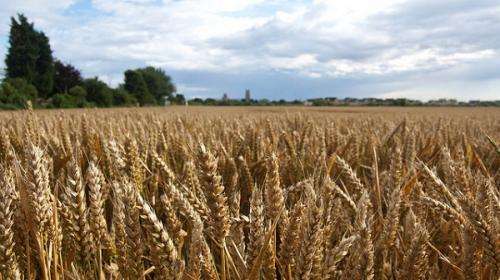Agricultural research extends carbon capture depths

A study of Western Australia's agricultural zones has shown deeper potential for soil carbon sequestration, in areas where the strategy has previously proven extremely difficult.
The Soil Carbon Research Program (SCaRP) brought scientists together from across Australia to assess the potential for soil carbon sequestration in the nation's agricultural zones.
In WA, seven regions and more than 1000 sites were selected according to soil type, land use, and climate scenarios, with findings from the Kalgan region in the Great Southern recently published.
WA Department of Agriculture and Food Senior Scientist Frances Hoyle says the program, led by UWA Professor Daniel Murphy, measured the actual soil organic carbon (SOC) storage capacity for the sites and then conducted modeling at selected sites to assess its further potential.
"The study area included 261 sites on the Albany sand plain, ranging from pasture systems with high levels of rainfall, to cropping systems with medium and low rainfall," she says.
"We requested 10 year management histories from all the sites, and included a range of land uses such as continuous cropping, mixed cropping, annual and perennial pastures."
Early analysis demonstrated up to 89 per cent of the variability in actual SOC stock measured in the region was explained by soil depth, rainfall, land use, and soil type, with average actual SOC stocks for land use (captured in)soil type combinations ranging from 33 to 128t C/ha (0–30cm).
However, Dr Hoyle says researchers ultimately aimed to identify which land systems have the greatest potential for carbon storage.
"With the initial data set taken from depths of 0–30cm, we used models to determine what the attainable SOC levels could be," she says.
This (result) suggested greater capacity for increasing storage over the long term.
"However when breaking down each of the three 10cm increments, our findings suggested that the top 10cm of the profile was relatively saturated or quite full," she says.
"This means that at the soil surface (0–10cm), carbon storage was already >95 per cent of its attainable capacity."
However, Dr Hoyle says in the subsoil below 10cm researchers demonstrated that depending on the specific land use, there could be an additional storage capacity of 5–45 per cent (7–27t C/ha).
"This has implications for management strategies to increase SOC sequestration in dryland agricultural systems, as current practices tend to concentrate organic matter near the soil surface," she says.
Dr Hoyle says that while the potential for additional storage is highlighted, measurable changes in SOC occur very slowly and require higher amounts of organic matter inputs, with greater potential for higher SOC in soils with increased clay content.
More information: The complete study is available online: www.publish.csiro.au/view/jour … cfm?nid=84&f=SR12373
Provided by Science Network WA


















